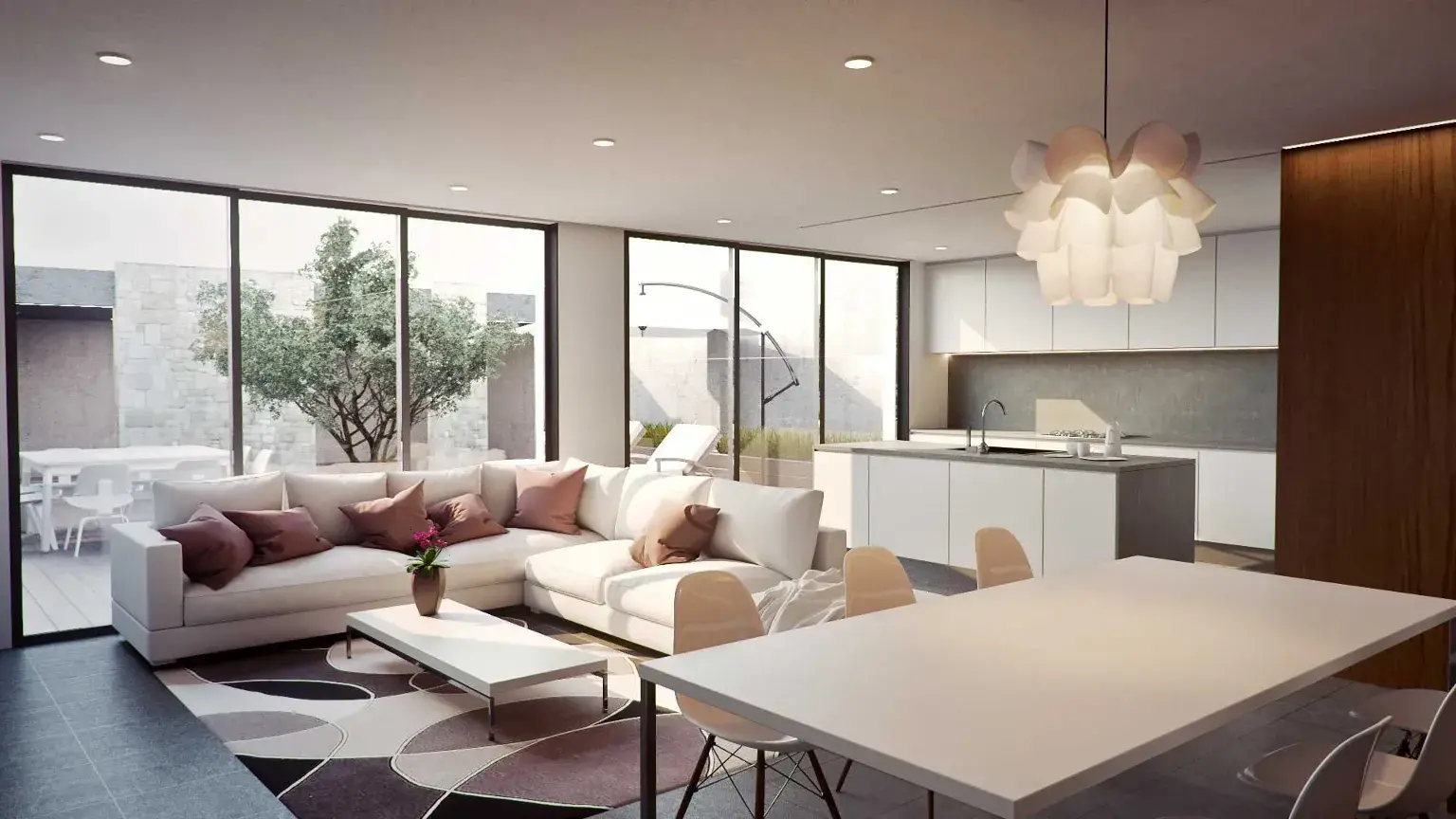Small spaces can present unique design challenges, but with the right approach, they can also become stylish and functional retreats. Incorporating clever decorating tips can transform any compact area into a visually appealing haven that maximizes both space and storage. Simple strategies can make a significant difference in how a small area feels and functions.
From utilizing multi-functional furniture to selecting lighter color palettes, effective decorating techniques allow for both personalization and practicality. Insights into vertical storage solutions can also provide an innovative way to add character without sacrificing floor space.
Engaging with these five fun, small space decorating tips will inspire anyone looking to optimize their living environment. By focusing on creative and strategic choices, transforming a small space into a cozy and inviting area is entirely achievable.
Smart Ways to Maximize Space
Maximizing space in small areas requires thoughtful planning and innovative solutions. By using multi-functional furniture, optimizing vertical space, and implementing strategic storage solutions, individuals can create a more spacious and organized environment.
Incorporating Multi-Functional Furniture
Multi-functional furniture is a game-changer in small spaces. Pieces such as sofas that convert into beds or coffee tables that double as storage allow users to take full advantage of limited square footage.
Ottomans with hidden compartments and dining tables that can extend for guests are also practical options. Selecting furniture that serves several purposes reduces clutter and enhances convenience while maintaining a stylish look.
When shopping, focus on items that fit well with the room’s aesthetic and provide versatility without sacrificing quality.
Optimizing Vertical Space
Utilizing vertical space effectively is crucial in smaller homes. Installing shelves high on walls or using tall bookcases maximizes the upward area while keeping the floor clear.
Wall-mounted organizers can store items like keys and mail, freeing up counter space. In the kitchen, hanging pots and pans or using pegboards can create both storage and visual interest.
Another effective method is to incorporate built-ins. These custom solutions can fit the specific dimensions of a room, providing a seamless look and ample storage without encroaching on valuable floor space.
Strategic Storage Solutions
Smart storage solutions can significantly enhance a small space. Utilizing under-bed storage bins for seasonal clothing or linen helps to free up closet space.
Adding shelves inside closets or using over-the-door organizers maximizes hidden areas and keeps essentials accessible.
Incorporating furniture with built-in storage, like benches or beds with drawers, allows for keeping items out of sight while maintaining a tidy appearance. Being creative with storage options transforms cluttered areas into functional, open spaces.
Creative Décor and Visual Expansion
Effective small space decorating relies heavily on illusions of space and creativity. Implementing light colors and accent walls can dramatically transform a room’s perception while adding personality.
Using Light Colors for Spaciousness
Choosing light colors for walls, furniture, and décor enhances the feeling of openness. Soft neutrals, like beige, pale grey, or pastel shades, reflect more light, which can make a room appear larger.
To maximize this effect, consider using glossy finishes. They can amplify light reflection, contributing to a brighter environment.
Adding light-colored textiles, such as curtains and upholstery, contributes to a cohesive look. It’s essential to balance these hues with darker accents to prevent a washed-out feeling.
Utilizing mirrors can also enhance this effect. Strategically placing them across from windows will create depth and replicate the sensation of additional space.
Accent Walls and Paint Ideas
Accent walls can add visual interest and structure to a small space. Selecting one wall to paint with a bold color can establish a focal point without overwhelming the area.
When choosing a paint color, consider colors like deep navy or emerald green. These shades can contrast beautifully with lighter tones, creating depth.
Using textured paint or wallpaper on the accent wall can introduce an additional layer of sophistication. Patterns or motifs contribute personality while keeping the surrounding walls airy.
Another option is to use striped wallpaper or paint techniques. Vertical stripes can draw the eye upward, enhancing the perception of height in the room.
Incorporate art or shelves on the accent wall to make it functionally appealing while emphasizing its decorative role.
Elevating Style with Functional Accessories
Functional accessories can transform a small space, adding both style and utility. Thoughtful accessories create a sense of individuality while optimizing limited square footage.
Arranging a Gallery Wall
A gallery wall serves as an excellent focal point in any small room. By carefully selecting a mixture of artwork, photographs, and decorative objects, one can create a personalized display that draws the eye.
Tips for arrangement:
- Mix sizes: Use varying sizes of frames to add depth.
- Level up: Start with a central piece and build around it to maintain balance.
- Consider spacing: Keep a consistent gap of 2-4 inches between frames for a cohesive look.
By incorporating personal items, a gallery wall reflects the personality of the individual while maximizing vertical space.
Choosing the Right Area Rug
An area rug can significantly enhance the aesthetic of a small space while defining areas. Selecting the right size and style can create warmth and cohesion.
Guidelines for selection:
- Size matters: Ideally, choose a rug that allows the front legs of furniture to rest on it. This will create unity in the room.
- Color and pattern: Lighter colors can make a space feel larger, while bold patterns add character.
- Texture: Incorporating a textured rug adds visual interest without overwhelming the space.
A carefully chosen rug adds comfort while ensuring that the layout remains functional and appealing.
Installing Wall-Mounted TVs
Mounting a TV on the wall conserves precious floor space, creating a clean and modern look. This practical approach not only frees up room but also enhances the viewing experience.
Considerations for installation:
- Height: Place the TV at eye level when seated for optimal viewing.
- Cables concealed: Use cable management systems to keep cords out of sight, maintaining a tidy appearance.
- Context: Ensure the TV complements other design elements in the room.
This approach not only improves functionality but also contributes to a polished and integrated design scheme.
Small Space Lighting and Finishing Touches
Effective lighting and smart finishing touches can dramatically enhance small spaces. By optimizing light sources and utilizing creative decor strategies, small areas can feel more spacious and inviting.
Optimizing Wall Lights
Wall lights are ideal for small spaces as they save floor space while providing ample illumination. It’s essential to select fixtures that complement the room’s style and size. For example, sconces can be mounted at eye level to cast light both upward and downward, creating visual interest.
Key considerations include:
- Brightness: Choose LED bulbs for energy efficiency and longevity.
- Size: Avoid bulky designs; thin, minimalist models work best.
- Placement: Install near seating areas or artwork to highlight features and provide ambient light.
Practical Window Treatments
Window treatments play a crucial role in maximizing natural light. Light-filtering shades or sheer curtains allow sunlight to enter while providing privacy. This option creates an airy feel without overwhelming the space.
Helpful tips for window treatments:
- Color: Opt for lighter colors to reflect light and create a brighter atmosphere.
- Mounting: Install treatments above the window frame for an illusion of height.
- Layering: Combining sheer panels with heavier drapery can help control light levels and add texture.
Styling with Floating Shelves
Floating shelves serve dual purposes in small spaces: they provide necessary storage and act as decorative elements. They enable the display of personal items without consuming valuable floor space. Properly styled, they can make a room appear more organized and visually appealing.
To style floating shelves effectively:
- Arrange items in groups: Use a mix of books, plants, and decor to create visual variety.
- Use vertical space: Install shelves higher on the wall to draw the eye upward, making the room feel larger.
- Vary heights and textures: Combine different item heights and textures for a balanced look, avoiding a cluttered appearance.


